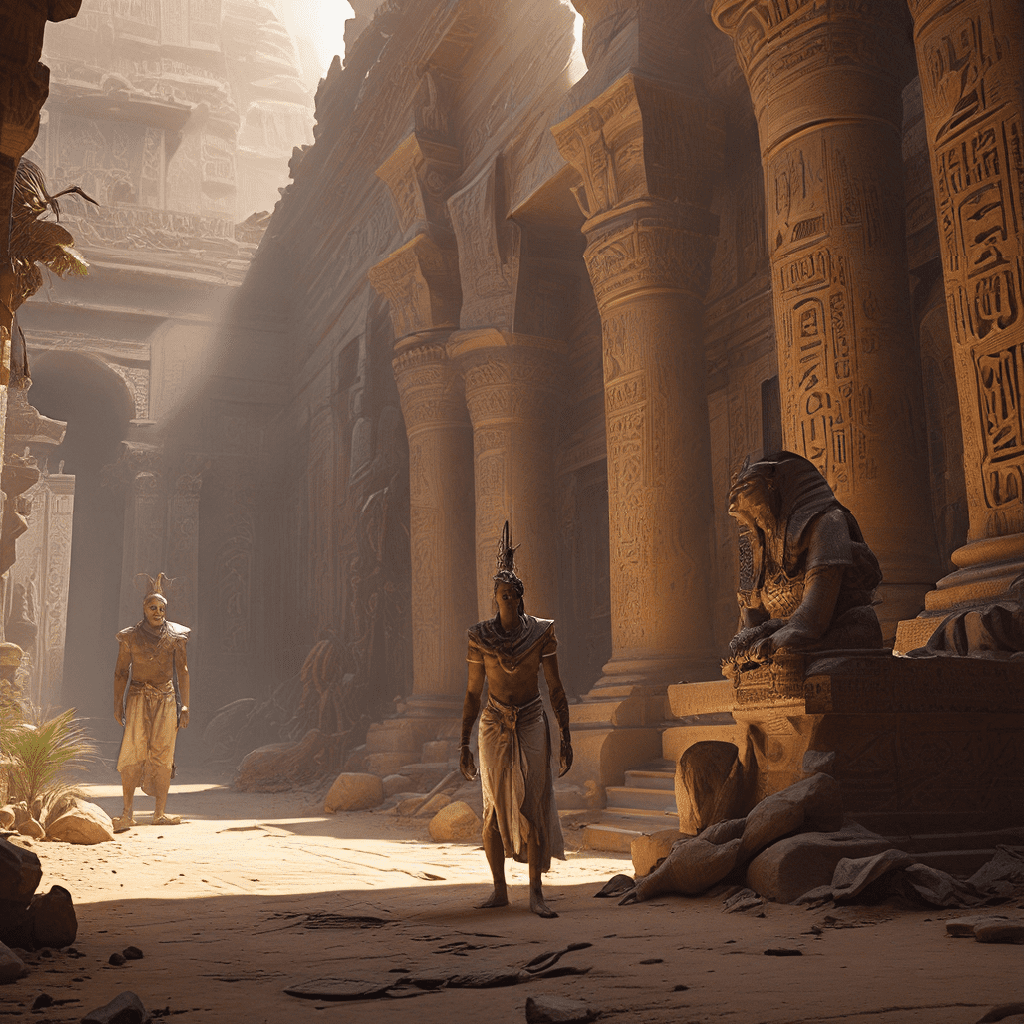The Egyptian Underworld: A Journey into the Shadowlands
1. Introduction: The Land of the Dead
In ancient Egypt, death was not an end but a transformation. Egyptians believed that after their earthly life, they embarked on a journey to the afterlife, a realm known as the Underworld. This belief played a vital role in their cultural understanding, shaping their rituals, art, and even their daily life. The concept of the afterlife was a source of comfort, promising a continuation of existence even after physical death.
2. The Path to the Underworld: The Journey Begins
The journey into the Underworld began with death. When someone passed away, their body was carefully prepared for the afterlife. This involved a complex embalming process, where the organs were removed and preserved, and the body was wrapped in linen bandages. The deceased was then placed in a sarcophagus, a coffin often adorned with elaborate carvings and hieroglyphs. The sarcophagus symbolized the journey to the afterlife and served as a final resting place. Before burial, a ceremony known as the “Weighing of the Heart” was performed. In this ritual, the heart of the deceased was weighed against a feather, symbolizing truth and justice.
3. The Underworld’s Guardians: Navigating the Challenges
The journey to the afterlife was not easy. The deceased had to navigate a dangerous and labyrinthine Underworld, guarded by terrifying creatures and deities. One of the most formidable guardians was the jackal-headed god Anubis, who guided the deceased through the initial stages of their journey. Anubis was also responsible for weighing the heart in the Hall of Maat. Another important guardian was the serpent goddess Wadjet, who protected the deceased from evil spirits. The deceased also faced challenges from the demons Apep, the god of chaos, who was said to threaten the sun god Ra’s journey across the sky. To overcome these dangers, the deceased had to rely on their knowledge of ancient spells and rituals, as well as the support of the gods.
4. The Hall of Maat: Justice and Judgement
The heart of the Underworld was the Hall of Maat, where the deceased faced their final judgment. Guided by the jackal-headed god Anubis, the deceased stood before Osiris, the god of the Underworld, and the god of the dead. The scribe god Thoth, recorded the outcome of the judgment. If the heart was light, it meant the deceased had lived a virtuous life and was worthy of entering the afterlife. But if the heart was heavy, it was devoured by Ammut, a terrifying monster with the head of a crocodile, the body of a lion, and the paws of a hippopotamus.
5. The Fields of Reeds: Eternal Life
For those who passed judgment, the afterlife was a paradise known as the Fields of Reeds. This idyllic realm was similar to the fertile Nile Valley, where the deceased could enjoy eternal life, free from suffering. They could fish, farm, and live in harmony with the gods. They would feast with Osiris, and worship the sun god Ra. It was a place of peace and happiness, where the deceased could finally rest after their long journey. The Fields of Reeds represented the ultimate reward for a virtuous life and symbolized the Egyptians’ enduring hope for an afterlife filled with joy and abundance.
6. The Duat: The Labyrinthine Underworld
The Duat was the actual underworld, a complex and dangerous labyrinth filled with obstacles and challenges. It was a realm of darkness and shadows, where the deceased faced various trials and tests. They navigated through caves, mountains, and watery passages, encountering creatures and deities associated with specific challenges. For example, the deceased might have to cross a lake of fire or appease a fearsome demon. The Duat was a metaphorical representation of the difficulties and dangers of life and the spiritual journey of the soul. The trials and obstacles the deceased faced were seen as tests of their moral character and their worthiness of entering the afterlife.
7. The Sun God Ra: The Journey’s Guiding Light
The sun god Ra was a central figure in the Egyptian Underworld. Ra’s daily journey across the sky represented the cycle of life, death, and rebirth. Each night, Ra sailed in his boat through the Duat, battling the forces of chaos and darkness. The deceased were often depicted accompanying Ra on his journey, seeking his guidance and protection during their own passage through the Underworld. The connection between Ra and the afterlife was profound, highlighting the importance of the sun as a source of light, warmth, and life. Ra’s journey through the Duat symbolized the struggle of the soul to overcome darkness and achieve enlightenment.
8. The Amduat: The Cosmic Map of the Underworld
The Amduat, a detailed map of the Underworld, served as a guide for the deceased on their journey. This complex and intricate text depicted the various regions of the Duat, the challenges and trials the deceased faced, and the deities who protected them. It also described the journey of Ra through the Underworld, highlighting his role in the cosmic order. The Amduat was a testament to the Egyptians’ elaborate understanding of the afterlife. It provided a blueprint for the deceased to understand their journey and navigate the complexities of the Underworld.
9. The Influence of the Egyptian Underworld: Legacy and Modern Interpretations
The Egyptian Underworld has had a lasting impact on later cultures and beliefs. Elements of their mythology, such as the concept of judgment and the afterlife, have found their way into other religious and philosophical systems. Even today, the Egyptian Underworld continues to inspire artists, writers, and filmmakers. The Egyptian Underworld is a rich and fascinating realm that continues to capture our imaginations and spark our curiosity. It reminds us of the enduring human fascination with the mysteries of death and the afterlife.




